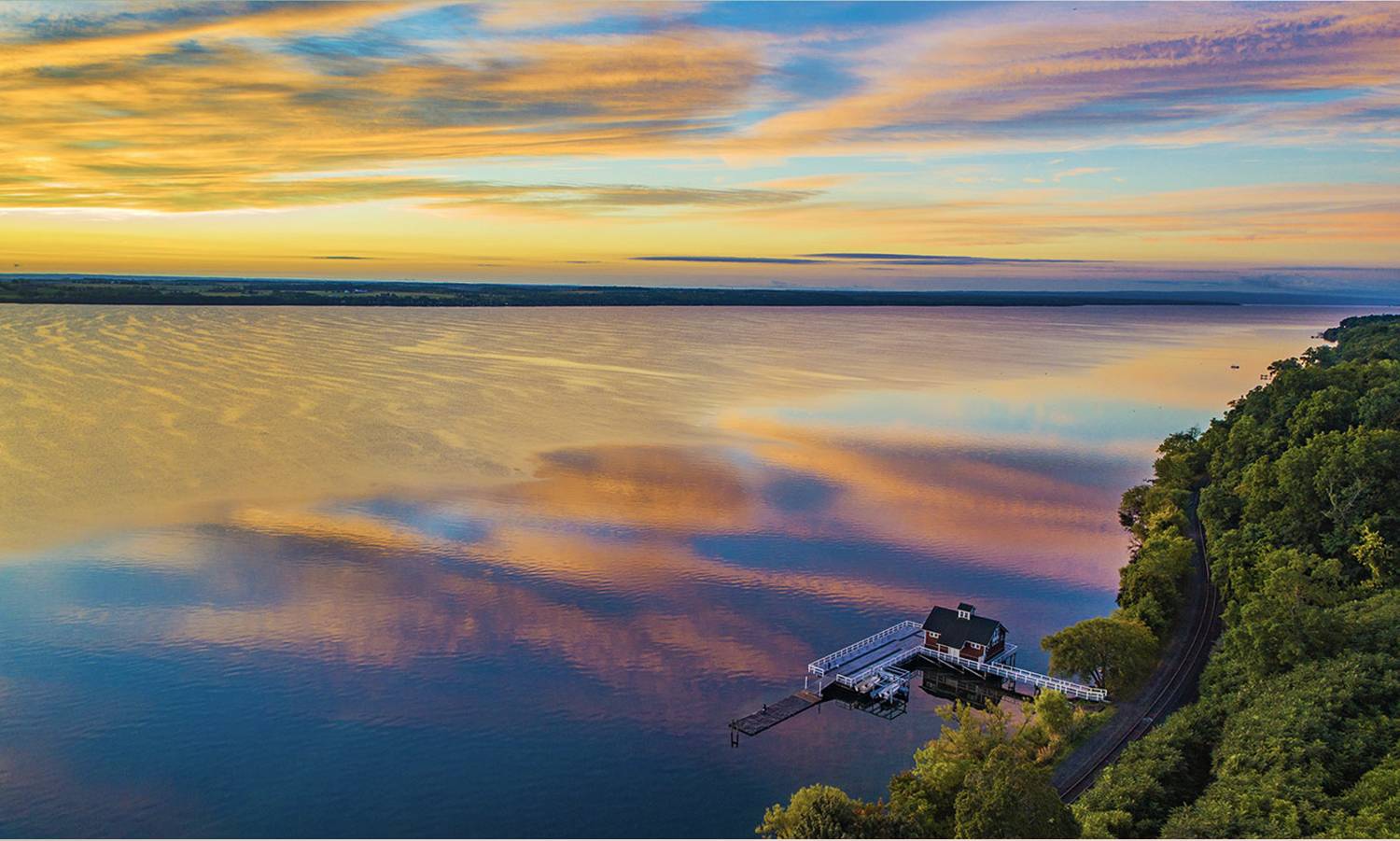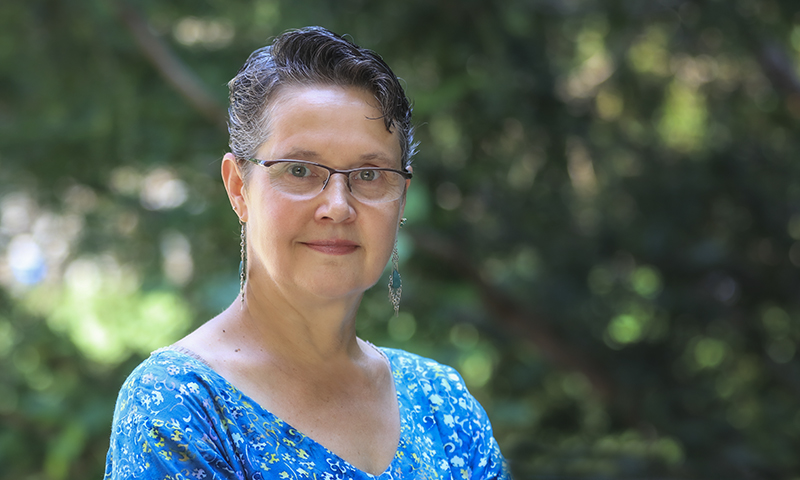
Nan Crystal Arens

Nan Crystal ArensProfessor of GeoscienceChair, Geoscience
Joined faculty in 2001
B.S., The Pennsylvania State University, 1987
M.S., The Pennsylvania State University, 1988
M.A., Harvard University, 1991
Ph.D., Harvard University 1993
Contact Information
Scholarly Interest
Prof. Emily Fisher, Psychological Science
Fisher, Emily and Nan Crystal Arens 2020 Geoscience education and motivated reasoning: Learning about climate change. Journal of College Science Teaching 49:5:36-41.
Fisher, E. and N.C. Arens. 2022. Reducing motivated reasoning through science education: In-person versus online classes. Society for the Psychological Study of Social Issues 2022 Summer Conference, San Juan, Puerto Rico, 24–26 June 2022.
Arens, N.C. and E. Fisher. 2021. Does a good professor in the classroom matter? Relaxing motivated reasoning around climate change. Geological Society of America Abstracts with Programs 53:6: doi: 10.1130/abs/2021AM-365229.
Fisher, E. and N.C. Arens. 2018. Geoscience education and motivated reasoning: Learning about climate change. Geological Society of America Abstracts with Programs 50:6: doi: 10.1130/abs/2018AM-315901.
Fisher, E. and N.C. Arens. 2018. Science education and motivated reasoning: Learning about climate change. Society for the Psychological Study of Social Issues 2018 Summer Conference, Pittsburgh, PA, 29 June to 1 July 2018.
Fisher, E. and N.C. Arens. 2017. Science education and motivated cognition: Shifting knowledge and attitudes about climate change. The 40th Annual Scientific Meeting of the International Society of Political Psychology, Royal College of Surgeons, Edinburgh, Scotland, 29 June to 2 July 2017.
Prof. Kristen Brubaker, Environmental Studies
Toupal*, Jonas, Kristen Brubaker and Nan Crystal Arens (submitted) Remote sensing mapping of mercury contamination in vegetated areas: The cases of Tarkwa, Ghana and Tongguan, China. Environmental Pollution.
Toupal*, J. and N.C. Arens. 2018. Can remote sensing map mercury pollution in vegetated areas: The case of Tarkwa, Ghana, Africa. Geological Society of America Abstracts with Programs 50:6: doi: 10.1130/abs/2018AM-323041.
*HWS student co-author
Research
(2) Macroevolutionary pattern.
(3) Environmental microplastics in the Finger Lakes.
Courses Taught
GEO 184—Introduction to Geology
We will explore the form and function of the solid Earth, using plate tectonics as a central paradigm. From this framework, we investigate minerals and rocks, volcanoes, earthquakes, the rise and fall of mountains, the origin and fate of sediments, the structure of our landscape and geological time. We analyze geological resources and the many ways human society interacts with our restless planet. My course introduces students to geological research through a series of mini research projects that take students from question to reporting results.
GEO 206—Scientific Communication
Scientists communicate to two primary audiences: other scientists and non-scientists. Each audience has different needs and successful communication requires that the writer keep the audience in mind. Scientists communicate in a variety of media: technical reports, non-technical articles, literature reviews, research proposals, technical posters, abstracts, and presentations both technical and non-technical. Each of these modes integrates verbal and visual elements. This course will explore each of these eight modes to help students already familiar with scientific content to become better communicators. We will begin by a close reading of examples of each mode of scientific communication to examine their elements, style and the ways in which the writer addresses the needs of the audience. Then students will compose in that mode. Composition will be followed by workshopping, detailed peer review and revision. This course is designed for students who are already familiar with technical content and will not address the principles of scientific reasoning or practice.
GEO 207—Statistics and Design in the Earth and Environmental Sciences
Investigation design and statistical analysis of data are intimately linked. This course will explore these facets of the scientific process iteratively. We will examine probability and sampling, study design and data integrity, hypothesis generation and testing, and data analysis using descriptive statistics, t-tests, chi-squared applications, one- and two-way analysis of variance, correlation, time series analysis and linear regression. We will also introduce multivariate methods of data structure exploration. Students will practice concepts by designing investigations in the realms of Earth and environmental science, gathering and/or assembling data from other sources and analyzing it using the R statistical computing environment.
GEO 375—Earth History
This course develops the methods by which the Earth's history is deciphered. It looks at tectonics, sedimentary rocks and their structures, fossils and the fossil record, organic evolution, climate evolution and various ways of delineating geological time, using careful analysis of key moments from Earth's past. We investigate problems in the field and stress observation, data aquisition, synthesis, interpretation, and reading and writing in the primary scientific literature.
DATA 353—Data Analytics Capstone
This course concludes the Data Analytics minor. In it students learn to wrap their visualization, analytics and modeling in an interactive user dashboard with Shiny. Students complete two projects: One reflecting data from their own domain focus and one responding to the needs of a "client" who is selected each semester. In the DATA capstone, students will refine their coding skills as well as pracicing the "soft" skills needed by data analysts: listening, problem-solving, creativity, persistence, communication, teamwork, and ethical judgement.
Publications
Arens, Nan Crystal, Levi Holguin* and Natalie Sandoval* (revised) Repairing the scaffolding: Women Authors in Paleobiology. Paleobiology.
Arens, Nan Crystal, Chase W. Bell*, Heather E.L. Kerns*, William R. Lewis*, Madeleine G. Meyer* and Will S.J. Murray (submitted) Microplastic in precipitation: A significant, variable and diffuse pollution source. Environmental Science & Technology, Air.
Toupal*, Jonas, Kristen Brubaker and Nan Crystal Arens (submitted) Remote sensing mapping of mercury contamination in vegetated areas: The cases of Tarkwa, Ghana and Tongguan, China. Environmental Pollution.
Harris,* Elisha B. and Nan Crystal Arens 2016 A mid-Cretaceous angiosperm-dominated macroflora from the Cedar Mountain Formation of Utah. Journal of Paleontology 90:4:640-662.
Arens, Nan Crystal and Joseph P. Gleason* 2016 Insect folivory in an angiosperm-dominated flora from the mid-Cretaceous of Utah, U.S.A. Palaios 31:71-80.
Arens, Nan Crystal and Elisha B. Harris* 2015 Palaeoclimatic reconstruction for the Albian–Cenomanian transition based on a dominantly angiosperm flora from the Cedar Mountain Formation, Utah, USA. Cretaceous Research 53:140-152.
Arens, Nan Crystal and Sarah E. Allen*. 2014. A florule from the base of the Hell Creek Formation in the type area of eastern Montana: Implications for vegetation and climate. G.P. Wilson, W.A. Clemens, J. Horner and J. Hartman (eds.) Through the End of the Cretaceous in the Type Locality of the Hell Creek Formation in Montana and Adjacent Areas. Geological Society of America Special Publication 503: 173-207.
Arens, Nan Crystal and Ian D. West*. 2008. Press-Pulse: A general theory of mass extinction? Paleobiology: 34:456-471.
*HWS student co-author
PROFESSIONAL AFFILIATIONS
Member: Phi Beta Kappa, Alpha Alpha Alpha, Geological Society of America, Botanical Society of America, American Fern Society, International Organisation of Palaeobotany, Association of Women Geoscientists, Paleontological Society, International Association of Pteridologists, Sigma Delta Epsilon—Graduate Women in Science
Board of Trustees, Paleontological Research Institute (2019-present)
Associate Editor, American Fern Journal (2011-2016)
Reporter for the Daily Collegian, State College, PA (1982-1986)
Public Relations writer for the College of Science and College of Earth and Mineral Science, Penn State (1984, 1987-1988)
Freelance science writer (1984-1988)
Tutor in math and science for learning disabled students, Penn State (1987-1988)
Adjunct Professor, Department of Biology,
Universidad del Valle, Cali, Colombia (1994-1996)
PERSONAL STATEMENT
In 2008, Ian West and I published a paper in the paleontology journal Paleobiology that described how the combination of deterioritating environmental conditions (ecological "press") and a disturbance (ecological "pulse") could produce a larger extinction than either of those events by themselves. Our idea was cited by lots of folks studying the history of life on Earth.
But in 2017, Prof. Thomas Seyfried and colleagues found the paper and made a new connection—to cancer. If a press and a pulse together could kill species, what about cancer cells? They proposed that stressing cancer by starving it (a press) made pulse treatments more effective. A whole new branch of cancer treatment approaches opened up. Dozens of papers cited our original work.
Who says paleontology doesn't help solve contemporary problems?
You never know where an idea will go!
